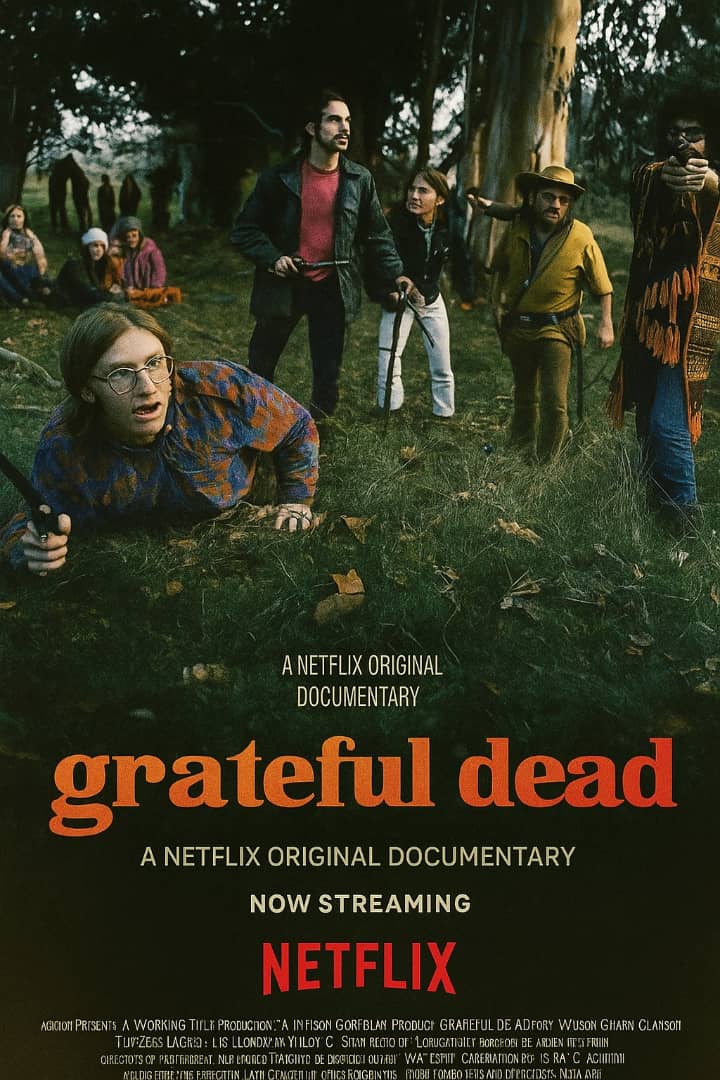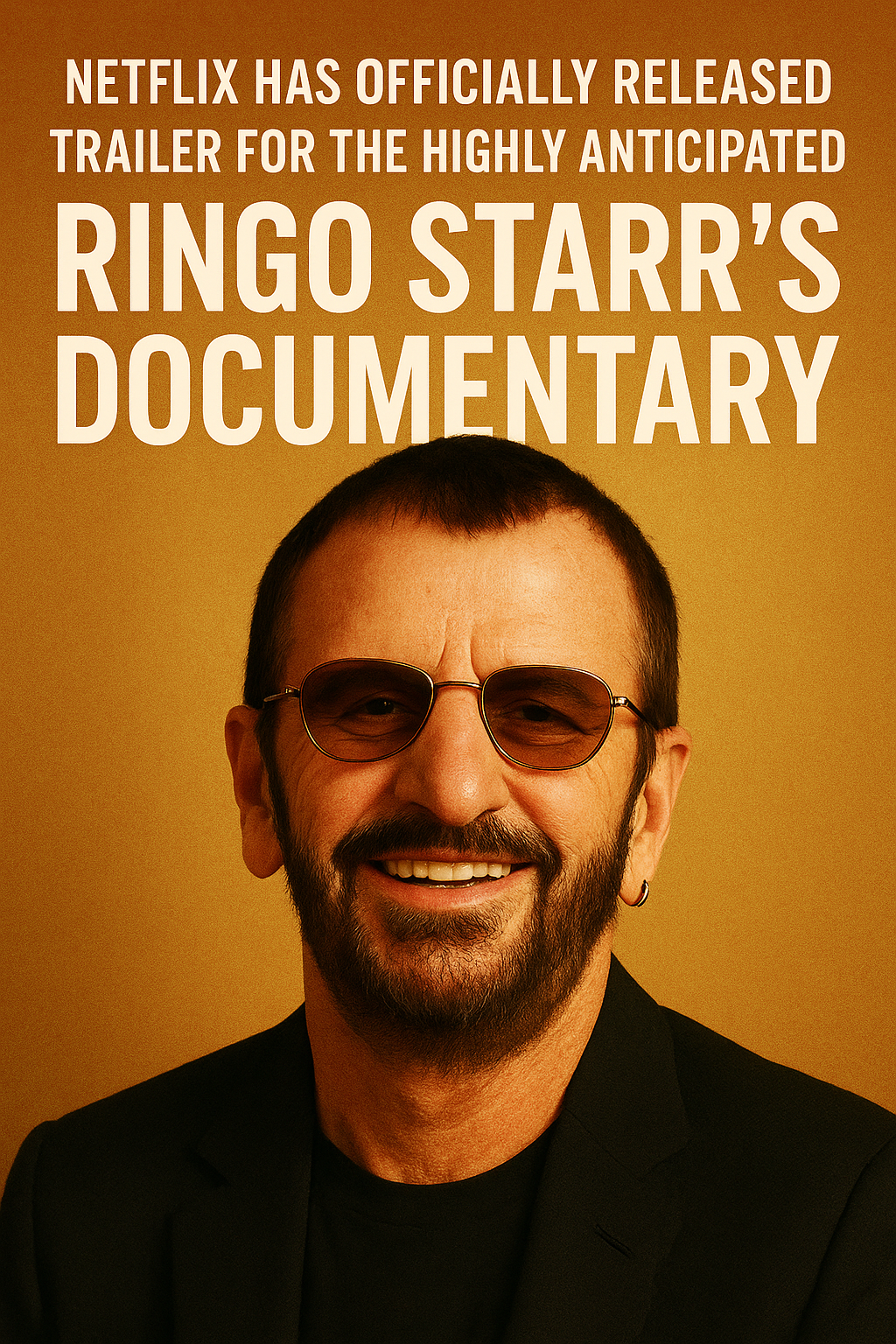The Grateful Dead have always been more than just a band — they’ve been a movement, a way of life, a colorful swirl of sound, soul, and rebellion that defied the boundaries of genre and time. Now, Netflix’s new documentary captures that essence in a way that feels less like watching a film and more like stepping into the pulsating heartbeat of an era. This isn’t merely a documentary; it’s an emotional experience that leaves you breathing in rhythm with the music, lost in the stories of those who lived it.
From the very first frame, the documentary pulls you into a kaleidoscope of sights and sounds that defined the counterculture revolution of the 1960s. The grainy concert footage, the candid backstage moments, and the glowing smiles of the Deadheads make the past feel immediate, alive, and tangible. It’s as though the camera itself has been soaked in the energy of thousands of people swaying under a summer sky, with the melodies of “Ripple” and “Scarlet Begonias” carrying their spirits higher.
The film weaves seamlessly between decades, exploring how Jerry Garcia and the band’s unshakable chemistry created something beyond music — a philosophy. Their shows weren’t just performances; they were communal celebrations of freedom and togetherness. The documentary captures that connection with remarkable intimacy, showing how the Grateful Dead became the heartbeat of a generation seeking something real in a world spinning faster every day.
Through rare interviews and unseen footage, fans finally get to hear the band speak about what drove them. Garcia’s calm yet intense reflections on creativity and impermanence feel prophetic, while Bob Weir’s grounded perspective balances the chaos with warmth and humor. Each member’s story contributes to the sense that this wasn’t just a band of musicians — it was a family, flawed but united by love, art, and an almost spiritual devotion to sound.
Visually, the film is a masterpiece. It doesn’t just show concerts; it immerses you in them. The editing is poetic, blending archival clips with beautifully shot recreations that make you feel as if you’re drifting through time. Psychedelic light shows pulse with the music, audience cheers ripple across the screen, and suddenly you’re not a viewer anymore — you’re part of the crowd, swaying and singing, feeling the echo of every note.
The documentary also takes time to explore the quieter moments, the pain behind the joy. It delves into the cost of fame, the toll of constant touring, and the struggles with addiction that haunted the band. Yet even in the darkest moments, there’s a sense of grace — the understanding that creation and chaos often walk hand in hand. The honesty in these moments gives the film its emotional weight, reminding viewers that the beauty of the Grateful Dead came from their humanity.
Beyond nostalgia, the documentary makes a strong case for why the Grateful Dead’s legacy still matters today. Their philosophy of inclusivity, improvisation, and connection resonates deeply in an age of digital distance. The band’s willingness to take risks — to fail spectacularly or succeed brilliantly — mirrors the uncertainty of modern life, and their music offers a kind of comfort in chaos that feels more relevant than ever.
Critics have described the documentary as a love letter to the Dead and their fans, and that’s exactly what it is. Every shot feels crafted with reverence, every chord played with devotion. The filmmakers clearly understand that to tell the story of the Grateful Dead, you can’t just document their history — you have to capture their spirit. And they do, with breathtaking success.
Fans who’ve followed the band for decades will find themselves in tears, laughter, and reflection, while newcomers will finally understand why people still follow the Dead’s message long after Garcia’s passing. The documentary reminds everyone that this isn’t music meant to be consumed — it’s meant to be experienced, lived, and shared. It’s a reminder of how art can build communities and create meaning even in fleeting moments.
As the final scenes roll, the screen fades to black and the words “The Story Never Ends” appear. It’s a simple message, but one that encapsulates everything the Grateful Dead stood for. Their music wasn’t about perfection — it was about connection, the unspoken bond between artist and audience that still thrives today in every tribute show, every jam session, every heart that beats to their rhythm.
What makes this documentary truly special is its emotional honesty. It doesn’t shy away from the complexities of the band or the contradictions in their journey. Instead, it celebrates them, showing that imperfection can be beautiful and that even chaos can create harmony. It’s a reflection of life itself — unpredictable, messy, but profoundly meaningful when shared with others.
By the time the credits roll, you realize you haven’t just watched a story — you’ve felt it. The laughter, the pain, the music, and the movement all flow together into something timeless. Netflix has managed to create more than just a documentary about the Grateful Dead. They’ve created an experience — a living, breathing tribute to a band that taught the world how to listen, feel, and believe in the power of music to change everything.


